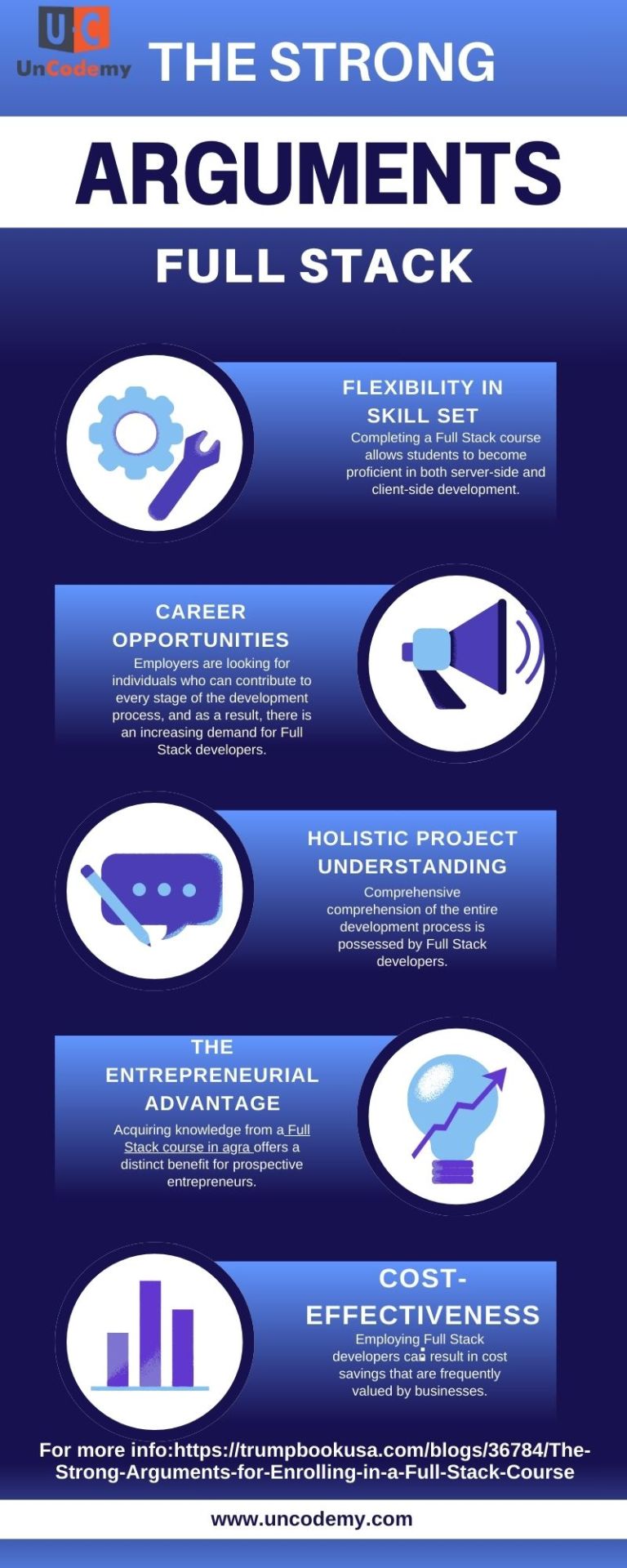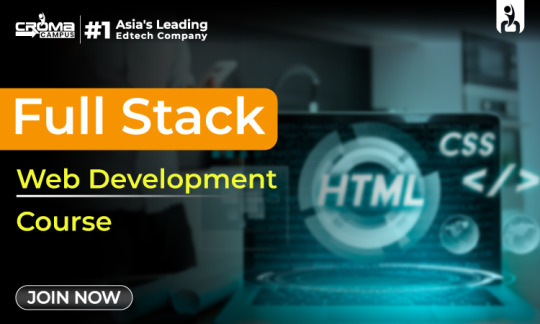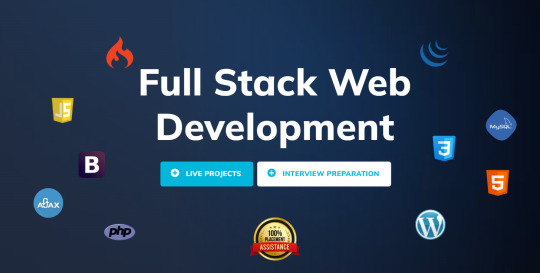#JavascriptDevelopers
Explore tagged Tumblr posts
Text
Hire ReactJS Developers for Scalable and High-Performance Web Applications
Looking to build a scalable web application? Hire ReactJS developers to create fast, interactive, and robust solutions tailored to your business needs.
#HireReactJSDevelopers#ReactJSDevelopment#WebDevelopment#ScalableWebApps#FrontendDevelopment#JavaScriptDevelopers#TechHiring
0 notes
Text
Best Programming Languages to Learn in 2025 for Career Success

As technology continues to evolve, learning the right Best programming languages is key to thriving in the job market. In 2025, these languages will stand out for career success:
Python: Known for its simplicity and versatility, Python is ideal for beginners and widely used in fields like data science, AI, and web development.
JavaScript: A must-learn for web development, JavaScript powers interactive websites and is essential for front-end and back-end development.
Java: With its long-standing popularity, Java remains crucial for enterprise applications, Android development, and backend systems.
Rust: Gaining traction for its performance and safety, Rust is excellent for system-level programming.
SQL: Essential for managing and analyzing databases, SQL is invaluable across industries.
Staying updated with these languages ensures better job opportunities and adaptability in the tech-driven future. Choose a language that aligns with your interests and career goals to make the most of your learning journey.
Learn More - https://goglobalways.com/blog/best-programming-languages-to-learn-in-2025/
#LearnToCode#ProgrammingLanguages2025#TechCareers#CodeYourFuture#PythonProgramming#JavaScriptDevelopers#RustLanguage#DataScienceSkills#WebDevelopment
0 notes
Text

Designs that resonate, not exaggerate. Let’s create impact together!💻
#UIUXDesign#UXDesign#UserInterface#UserExperience#UIUXTrends#InteractionDesign#TechDesign#WebTech#ModernWeb#TechSolutions#WebInnovation#HTMLCSSJS#JavaScriptDevelopers#WebDevelopment#WebsiteDesign#WebDev#WebDesignInspiration#CodeLife#FullStackDevelopment#FrontendDevelopment#BackendDevelopment#CleanCode#ResponsiveDesign
0 notes
Text

Edoxi's MEAN Stack Course in Dubai equips you with essential skills to become a proficient developer, featuring one-on-one mentorship from our experts. Enroll Now!
Call us: +971 4380 1666
Mail us, at [email protected]
#MEANStackDubai#LearnMEANStack#WebDevelopmentDubai#CodingInDubai#MEANStackTraining#FullStackDevelopment#JavaScriptDevelopers
0 notes
Text
Unlocking the Power of JavaScript: Expert On-Demand Developers | Chetu
Hire expert on-demand JavaScript developers from Chetu to build robust and dynamic web applications tailored to your business needs. Get scalable solutions with our experienced team.
0 notes
Text
Frontend Frameworks for Web Development

Frontend Frameworks for Web Development, creating captivating and user-friendly websites and web applications is essential for businesses to thrive. With the increasing demand for dynamic and interactive web experiences, frontend development has become more crucial than ever.
To meet these demands efficiently, developers rely on frontend frameworks, which streamline the development process and enhance productivity.
In this comprehensive guide, we'll explore the world of frontend frameworks for web development, covering everything from key factors to consider when choosing a framework to the top options available in India.
Overview of Frontend Frameworks for Web Development
Frontend frameworks are collections of pre-written code, libraries, and tools that expedite the process of building user interfaces for websites and web applications.
These frameworks provide developers with a structured approach to frontend development, offering ready-made components, templates, and utilities to streamline common tasks.
By leveraging frontend frameworks, developers can achieve consistency, maintainability, and scalability in their projects while focusing more on functionality and user experience.
These frameworks often follow the principles of modularization and component-based architecture, facilitating code reuse and making development more efficient.
Key Factors to Consider in a Frontend Frameworks for Web Development
When choosing a frontend framework for web development, several key factors should be considered:
Community Support: Opt for frameworks with active and robust communities. A strong community ensures ongoing support, frequent updates, and a wealth of resources such as documentation, tutorials, and plugins.
Performance: Evaluate the performance metrics of the framework, including page load times, rendering speed, and resource utilization. A lightweight and efficient framework can significantly impact the user experience.
Flexibility and Customization: Assess the framework's flexibility in accommodating project requirements and its customization options. Look for frameworks that allow developers to tailor components and styles to suit specific design needs.
Learning Curve: Consider the learning curve associated with the framework, especially if you're working with a team of developers with varying skill levels. Choose a framework that aligns with your team's expertise and resources.
Compatibility and Browser Support: Ensure that the framework is compatible with a wide range of browsers and devices, particularly if your target audience includes users with diverse preferences and devices.
Updates and Maintenance: Check the framework's update frequency and long-term maintenance plans. Regular updates and proactive maintenance are essential for addressing security vulnerabilities and compatibility issues.
7 Best Frontend Frameworks for Web Development in India
Now, let's explore some of the top Frontend Frameworks for Web Development widely used by developers in India:
React.js: Developed by Facebook, React.js is a popular JavaScript library for building user interfaces. It emphasizes component-based architecture and virtual DOM for efficient rendering. React's ecosystem includes tools like React Router for routing and Redux for state management.
Angular: Backed by Google, Angular is a comprehensive frontend framework for building robust web applications. It provides features such as two-way data binding, dependency injection, and modular development. Angular offers a full-fledged ecosystem with Angular CLI for project scaffolding and Angular Material for UI components.
Vue.js: Vue.js is an advanced JavaScript framework known for its simplicity and flexibility. It allows developers to incrementally adopt its features and integrate it into existing projects easily. Vue.js offers reactive data binding, virtual DOM, and a rich ecosystem of plugins and components.
Bootstrap: Bootstrap is a popular CSS framework for building responsive and mobile-first websites. It provides a grid system, pre-styled components, and responsive utilities, allowing developers to create sleek and consistent designs quickly. Bootstrap is highly customizable and offers extensive documentation and community support.
Svelte: Svelte is a relatively new frontend framework that focuses on compiling components at build time rather than runtime. This approach results in highly optimized and lightweight web applications. Svelte's simplicity and performance make it an attractive choice for developers seeking efficiency and speed.
Tailwind CSS: Tailwind CSS is a utility-first CSS framework that provides a set of low-level utility classes for building custom designs. It offers a highly customizable and expressive approach to styling, enabling developers to create unique and responsive interfaces without writing custom CSS. Tailwind CSS is gaining popularity for its developer-friendly workflow and rapid prototyping capabilities.
Foundation: Foundation is a responsive front-end framework developed by ZURB, known for its modular and customizable nature. It offers a comprehensive set of CSS and JavaScript components, as well as a robust grid system and a variety of UI elements. Foundation is well-suited for building modern and accessible web projects.
Conclusion for Web Development
Choosing the right Frontend Frameworks for Web Development is crucial to the success of your website development. Consider factors such as community support, performance, flexibility, and compatibility when evaluating different frameworks. Each framework has its strengths and weaknesses, so assess your project requirements and development preferences carefully before making a decision.
Whether you opt for React.js, Angular, Vue.js, or any other frontend framework, prioritize learning and mastering the chosen tool to maximize its potential and deliver exceptional web experiences. Keep abreast of new developments, best practices, and emerging trends in frontend development to stay ahead in this ever-evolving field.
FAQs for Web Development
Q: Which frontend framework is best for beginners?
A: Vue.js and React.js are often recommended for beginners due to their relatively gentle learning curves and extensive documentation.
Q: How do I choose between Angular and React for my project?
A: Consider factors such as project requirements, team expertise, and ecosystem preferences. Angular offers a comprehensive solution with built-in features, while React provides more flexibility and a vibrant ecosystem.
Q: Are frontend frameworks necessary for web development?
A: While not strictly necessary, frontend frameworks greatly simplify and expedite the web development process, especially for complex and dynamic projects. They provide structure, consistency, and efficiency, ultimately enhancing productivity and user experience.
Q: Can I use multiple frontend frameworks in the same project?
A: While technically possible, using multiple frontend frameworks in the same project can lead to complexity, conflicts, and maintenance challenges. It's generally advisable to stick to a single framework to maintain code consistency and streamline development.
More Details
Email: [email protected]
Website: https://censoware.com/
#web development#website development#software development#web developers#pythonprogramming#phpdeveloper#javascriptdeveloper#mern stack development#mobile app development
2 notes
·
View notes
Text

New frameworks and tools are constantly being developed in the tech sector, which is a dynamic industry. By nature, Full Stack developers are used to lifelong learning. This flexibility is an essential quality in a field where keeping up with emerging technologies is critical. Taking a Full Stack course fosters an attitude of lifelong learning and development.
Web: https://trumpbookusa.com/blogs/36784/The-Strong-Arguments-for-Enrolling-in-a-Full-Stack-Course
#codingmemes#webdevelopers#nodejs#software#javascriptdeveloper#daysofcode#development#developers#web#bootstrap#o#computerscience#pythonprogramming#peoplewhocode#javascripts#javaprogramming#softwareengineer#technology#dev#react#developerlife#codingdays#softwaredevelopment#webapp#webdevelopmentcompany#programmerlife#tech#github#ui#programmers
4 notes
·
View notes
Text

Learn JavaScript Super Fast: https://www.youtube.com/watch?v=BIth3TtSoOY Share with your friends and help them to learn JavaScript at Super Fast.
Learn more: https://www.youtube.com/chidrestechtutorials
#javascript#webdesign#webdevelopment#programming#coding#javascriptdeveloper#webdesigner#webdeveloper#coder#programmer
1 note
·
View note
Text
𝐖𝐡𝐚𝐭 𝐚𝐫𝐞 𝐭𝐡𝐞 𝐄𝐬𝐬𝐞𝐧𝐭𝐢𝐚𝐥 𝐓𝐢𝐩𝐬 𝐟𝐨𝐫 𝐒𝐮𝐬𝐭𝐚𝐢𝐧𝐚𝐛𝐥𝐞 𝐅𝐮𝐥𝐥 𝐒𝐭𝐚𝐜𝐤 𝐃𝐞𝐯𝐞𝐥𝐨𝐩𝐦𝐞𝐧𝐭?
𝐑𝐞𝐚𝐝 𝐎𝐮𝐫 𝐋𝐚𝐭𝐞𝐬𝐭 𝐀𝐫𝐭𝐢𝐜𝐥𝐞𝐬: https://techdesigner.ru/posts/what-are-the-essential-tips-for-sustainable-full-stack-development
𝐅𝐨𝐫 𝐅𝐫𝐞𝐞 𝐂𝐨𝐧𝐬𝐮𝐥𝐭𝐚𝐭𝐢𝐨𝐧: 𝐂𝐚𝐥𝐥 /𝐖𝐡𝐚𝐭𝐬𝐚𝐩𝐩: +91-9711526942

#FullStackDeveloper#WebDevelopment#FullStack#MERNStack#FrontendDeveloper#BackendDeveloper#CodingLife#JavaScriptDeveloper#LearnToCode#SoftwareDevelopment#FullStackEngineer#ProgrammingLife#TechCareer#CromaCampus
0 notes
Text
Full Stack Developer Certification – CodingBit
Learn from industry experts and elevate your skills. Our Full Stack Web Development Course has been specially structured to help you acquire hands-on experience in using the latest tools and technologies and frameworks. Learn best practices, stay current with trends, and build real-world applications to step into a successful career in web development. The Full Stack Web Development Course and Coding Bit is a comprehensive program that trains prospective developers, aspiring both to master front-end and back-end technologies. This course will help you train-from beginners to up- skillets-to acquire the knowledge and expertise to create dynamic, responsive, and scalable web applications.
Front-End Development
HTML5, CSS3, JavaScript, React.js, Bootstrap, Responsive Design
Back-End Development
Node.js, Express.js, REST APIs, Authentication, MVC Architecture
Database Management
MongoDB, MySQL, Firebase Integration
Version Control & Deployment
Git, GitHub, Netlify, Vercel, Heroku
Capstone Projects
Real-world web apps built with full-stack tools
Phone: 9511803947
Email: [email protected]

#FullStackWebDevelopment#FullStackDeveloper#WebDevelopmentCourse#LearnWebDevelopment#CodingBootcamp#FrontendToBackend#JavaScriptDeveloper#ReactNodeMongo#BuildWithCode
0 notes
Text
How to Design and Build Scalable Microservices in Node.js
Microservices are becoming the go-to architecture for modern applications, and if you're just starting out with backend development, Node.js is a great place to begin. Known for its speed and lightweight nature, Node.js is an ideal choice for building services that need to grow and scale over time. If you're exploring Node.js web development, understanding how to create scalable microservices is a vital skill.
In this article, we’ll walk you through what microservices are, why they’re useful, and how you can design and build them using Node.js- even if you're new to backend programming.
What Are Microservices?
A microservices architecture breaks down a large application into smaller, independent services that each perform a specific task. These services communicate with each other through APIs, usually over HTTP or messaging queues.
For example, in an e-commerce platform:
One microservice might handle user authentication
Another handles orders
A third manages product listings
This approach is more flexible and maintainable than a traditional monolithic application, where everything is packed into one large codebase.
Why Choose Node.js for Microservices?
There are several reasons developers choose Node.js for microservices:
Fast and non-blocking I/O: Node.js handles multiple requests efficiently without waiting for previous ones to finish.
Lightweight and modular: Node’s package manager (npm) offers thousands of ready-to-use modules.
Easy to scale: Built-in tools like clustering and horizontal scaling make it easier to grow your services.
JavaScript everywhere: You can use the same language on both the frontend and backend.
Whether you're building your first API or planning a bigger system, many startups and enterprises rely on professional Node.js Development Services to set up clean and efficient architectures from the start.
Step-by-Step: Building Scalable Microservices in Node.js
Let’s break it down into manageable steps.
1. Define Your Services Clearly
Start by identifying the business functions of your app. Each microservice should be responsible for one feature or domain.
For example:
User Service for authentication
Order Service for handling transactions
Inventory Service for managing products
Keep each service focused. This improves performance and makes your app easier to maintain or scale.
2. Set Up a Basic Node.js Service
Here’s a very simple example using Express.js:
mkdir user-service cd user-service npm init -y npm install express
Create a server.js file:
jsCopy
const express = require('express'); const app = express(); app.get('/users', (req, res) => { res.json([{ id: 1, name: 'Alice' }]); }); app.listen(3000, () => { console.log('User service is running on port 3000'); });
This is your first microservice.
3. Use a Gateway or API Layer
In a microservices setup, each service has its own endpoint. But to avoid confusing your users with multiple URLs, you can use an API Gateway like Express Gateway, Kong, or Nginx to route traffic to the correct service.
The gateway can also handle:
Authentication
Rate limiting
Logging
Version control
If you want to save time and ensure best practices, it’s often a good idea to hire Node.js developers who already understand how to configure gateways and secure your APIs effectively.
4. Implement Inter-Service Communication
Microservices often need to talk to each other. This is done through APIs (HTTP) or message brokers (like RabbitMQ or Kafka).
In a simple HTTP example:
jsCopy
// order-service calls user-service const axios = require('axios'); axios.get('http://localhost:3000/users') .then(res => console.log(res.data));
As your system grows, switching to messaging queues improves performance and decouples services even further.
5. Use Docker to Containerize Your Services
To make your services easy to deploy, run, and scale, containerize them using Docker.
Here’s a simple Dockerfile for a Node.js service:
dockerfileCopy
FROM node:18 WORKDIR /app COPY . . RUN npm install CMD ["node", "server.js"]
This makes your service portable and predictable—key traits for scaling.
Most Node.js development companies containerize microservices and use orchestration tools like Docker Compose or Kubernetes to manage multiple services efficiently.
6. Add Monitoring and Logging
Don’t wait until something breaks. Add monitoring early.
Use tools like:
Winston or Morgan for logging
Prometheus and Grafana for monitoring performance
Logstash or Elasticsearch for log storage and search
This visibility helps you debug faster and scale more reliably.
7. Plan for Scaling
Node.js can scale vertically (more CPU/threads) and horizontally (more instances). Use built-in clustering or cloud platforms (like AWS ECS, Azure App Service, or Google Cloud Run) to scale your services based on demand.
Scalability is where many teams turn to expert Node.js Development Services to architect fault-tolerant and load-balanced systems that handle high traffic smoothly.
Tips for Beginners
Here are a few tips to make your microservices journey easier:
Start with two services and expand gradually
Keep services stateless (no shared memory or sessions)
Use environment variables for configuration
Maintain separate codebases for each service
Write clear API documentation for each microservice
Building scalable microservices doesn’t mean building everything at once. Take it step by step.
When to Seek Help
When your app grows in complexity or you need to handle production-level traffic, it might be time to bring in professional help.
A reputable Node.js development company can support you with:
System design and architecture
API security and versioning
Testing and CI/CD pipelines
Cloud deployment and scaling strategies
Or, if you’re looking for temporary expertise, you can hire Node.js developers to join your team on a freelance or contract basis. They’ll help speed up development, review your code for best practices, and guide your technical decisions.
Final Thoughts
Designing scalable microservices in Node.js is not as hard as it sounds—especially if you take a modular, step-by-step approach. With the right structure and tools, you can build systems that are easier to manage, faster to deploy, and ready to grow.
Whether you're building your first microservice or planning to scale a business application, Node.js has the flexibility and performance to help you succeed.
And when you're ready to move faster and scale smarter, don’t hesitate to reach out to a reliable Node.js development company or hire Node.js developers who can bring your vision to life with confidence.
#NodeJS#Microservices#BackendDevelopment#ScalableArchitecture#DistributedSystems#JavaScriptDevelopment#CloudNative#DevOps#Docker#Kubernetes#SystemDesign#WebDevelopment#TechArchitecture#HighAvailability#Serverless#APIDevelopment#SoftwareEngineering#CodeQuality#FullStackDevelopment
0 notes
Text

Why Every Service Business Needs Custom Website Development: From Online Presence to Client Conversion
Service-based businesses find themselves in a fiercely competitive industry in which they are forced to lower their use of old-established sites or generic templates to enhance their web presence.
#websitedevelopmentservice#webdevelopment#frontenddeveloper#customwebdevelopment#backenddeveloper#fullstackdeveloper#professionalwebsite#webdesignagency#softwaredevelopment#websiteredesign#digitaltransformation#javascriptdeveloper
0 notes
Text
Deno 2.3 Introduces Support for Local NPM Packages: A Game-Changer for JavaScript Developers
Deno 2.3 introduces support for local NPM packages, marking a significant milestone for developers working with JavaScript and TypeScript. This latest update to the modern runtime brings a host of enhancements that streamline workflows, boost performance, and deepen integration with the NPM ecosystem. For developers seeking a secure, efficient, and flexible environment, this release opens new doors for local package management and beyond. Let’s explore what makes this update a must-know for the JavaScript community.
Why Deno 2.3 Matters for Developers
The release of Deno 2.3 is more than just a version bump. It addresses key pain points for developers, particularly those working in complex projects that rely on NPM dependencies. By introducing support for local NPM packages, Deno empowers developers to test and iterate on modules without needing to publish them to a registry. This feature alone saves time and enhances the development experience, especially for those managing private or experimental packages.
Beyond local package support, the update includes improvements to compilation, code formatting, and observability. These additions make Deno an even stronger alternative to traditional runtimes like Node.js, offering a zero-config, secure-by-default environment that aligns with modern web standards.
The Power of Local NPM Package Support
One of the standout features of Deno 2.3 is its ability to handle local NPM packages seamlessly. Previously, developers had to publish packages to a registry or rely on workarounds to test locally. Now, Deno allows you to reference a local folder directly, making it easier to develop and debug NPM modules without external dependencies.
This feature is particularly valuable for teams working on monorepos or private libraries. By configuring a local node_modules directory, developers can ensure that their projects remain self-contained and reproducible. Whether you’re prototyping a new feature or refining an existing package, this capability reduces friction and accelerates iteration.
How Local NPM Support Enhances Workflows
Local NPM package support in Deno 2.3 introduces support for local NPM packages by allowing developers to specify a local path in their configuration files. This eliminates the need for constant publishing and republishing during development. For example, teams can now link a local package to multiple projects, test changes in real-time, and maintain control over their dependencies.
Additionally, Deno’s secure-by-default model ensures that local packages adhere to the same permission-based access controls as remote ones. This means you can experiment with local modules without compromising the integrity of your project. The result is a smoother, safer, and more efficient development process.
Enhanced Compilation Capabilities
Deno 2.3 doesn’t stop at package management. The update significantly improves the deno compile command, enabling developers to create standalone binaries with greater flexibility. These binaries now support Foreign Function Interface (FFI) and Node native add-ons, allowing for deeper integration with native libraries and plugins.
Building Leaner Binaries
A key enhancement to compilation is the ability to exclude specific files from the final binary. This feature lets developers reduce the size of their executables, making them more efficient for distribution. For instance, you can exclude development or test files, ensuring that only production-ready code is packaged.
The introduction of the Deno.build.standalone boolean flag further enhances compilation. This flag allows your code to detect whether it’s running in a compiled binary, enabling dynamic behavior based on the execution context. Whether you’re toggling features or customizing error messages, this introspective capability adds a layer of sophistication to your applications.
Cross-Platform Compatibility
With Deno 2.3, compiled binaries are more versatile than ever. The support for FFI and Node add-ons means you can leverage platform-specific libraries without sacrificing portability. This makes Deno an attractive choice for building cross-platform tools, from command-line utilities to desktop applications.
Improved Code Formatting with deno fmt
Code consistency is critical for collaborative projects, and Deno 2.3 delivers with an upgraded deno fmt command. This formatter now supports embedded CSS, HTML, and SQL within tagged templates, ensuring that your mixed-content codebases remain tidy and readable.
New Formatting Options
The update introduces 14 new formatting options, giving developers fine-grained control over their code’s appearance. Whether you’re working with JavaScript, TypeScript, or embedded languages, these options let you tailor formatting to your team’s preferences. This is a boon for projects with diverse file types, as it reduces the need for external formatters.
Streamlined CI Pipelines
Deno 2.3 also extends the --permit-no-files flag to deno fmt and deno lint. This prevents errors when no files are found, making it easier to integrate formatting and linting into continuous integration (CI) pipelines. By reducing false positives, this enhancement saves time and ensures smoother automation.
Boosted Observability with OpenTelemetry
Observability is a cornerstone of modern application development, and Deno 2.3 strengthens its OpenTelemetry support. This update adds event recording, span context propagation, and V8 engine metrics, giving developers deeper insights into their applications’ performance.
Monitoring Made Simple
With expanded OpenTelemetry features, you can capture detailed telemetry data and export it to tools like Grafana or Honeycomb. This makes it easier to diagnose bottlenecks, track user interactions, and optimize resource usage. For teams running production workloads, these capabilities are invaluable for maintaining reliability.
Seamless Integration
Deno’s OpenTelemetry support integrates seamlessly with existing observability stacks. Whether you’re monitoring a serverless function or a full-fledged API, the added metrics and tracing options provide a comprehensive view of your application’s behavior. This aligns with Deno’s goal of simplifying complex workflows without sacrificing power.
Performance and Ecosystem Improvements
Deno 2.3 brings a slew of performance optimizations, particularly for projects with NPM dependencies. Package installation via deno install and deno add is now up to twice as fast when dependencies are cached. This speed boost is especially noticeable in large monorepos, where redundant dependency resolution has been minimized.
Upgraded Engines
The update includes upgrades to TypeScript 5.8 and V8 13.5, bringing new language features and performance improvements. These enhancements ensure that Deno remains at the cutting edge of JavaScript and TypeScript development, offering developers the latest tools to build robust applications.
Better Jupyter Integration
For data scientists and researchers, Deno 2.3 improves the Jupyter notebook experience. Variables, modules, and type definitions are now shared across cells, making it easier to explore datasets and prototype scripts. This enhancement positions Deno as a compelling choice for interactive JavaScript and TypeScript development.
Why Choose Deno 2.3?
Deno 2.3 introduces support for local NPM packages, but its impact goes far beyond this single feature. With improved compilation, formatting, observability, and performance, this release solidifies Deno’s position as a modern, developer-friendly runtime. Its seamless integration with the NPM ecosystem, combined with a secure and zero-config approach, makes it an ideal choice for both new and existing projects.
Whether you’re building a startup’s backend, a personal CLI tool, or a data visualization dashboard, Deno 2.3 offers the tools you need to succeed. Its focus on simplicity, security, and performance ensures that you can focus on writing code rather than wrestling with configuration.
Getting Started with Deno 2.3
Ready to dive into Deno 2.3? Getting started is straightforward. If you haven’t installed Deno yet, you can do so with a single command from the official website. Once installed, explore the new features by creating a project and experimenting with local NPM packages or compilation.
The Deno documentation provides detailed guides on leveraging local package support, formatting options, and observability features. For community support, check out the Deno subreddit or GitHub repository, where developers share tips and discuss the latest updates.
Deno 2.3 introduces support for local NPM packages, delivering a feature that developers have long awaited. Combined with enhanced compilation, improved formatting, and robust observability, this release makes Deno a powerhouse for JavaScript and TypeScript development. By addressing real-world needs with practical solutions, Deno 2.3 empowers developers to build faster, safer, and more maintainable applications.
#Deno#Deno2_3#JavaScript#NPM#LocalNPMPackages#WebDevelopment#JavaScriptDevelopment#NodeJS#Programming#TechNews#DeveloperTools#SoftwareDevelopment
0 notes
Text
Digital Products – Top Nodejs Development Company in India
Webworx services position us as a leading Nodejs development company in India, delivering custom backend architecture that fits your niche. From e‑commerce to IoT, we engineer solutions with precision and security. Agile milestones ensure timely, iterative progress and transparent communication. Elevate your project—reach out for a tailored proposal!

#NodeJSDevelopment#NodeJSIndia#BackendDevelopment#FullStackDevelopment#WebworxTech#JavaScriptDevelopment#APIDevelopment#TechInnovationIndia
0 notes
Text
Web Development Course with Placement
Here begins your foray into the domain of Full Stack Development with Coding Bit beneath a vast and exciting canopy of career opportunities. The program starts with a highly inspiring orientation session by Jasmeen Shaikh, where you will get to know your instructors and get acquainted with your fellow learners to create a vibrant tech community right from the onset. The learning and practice will continue as you scale full stack skills with hands-on projects similar to real-world applications. From front-end technologies like HTML, CSS, and React to back-end tools like Node.js, Express, and MongoDB, you're going to gain the practical knowledge expected by employers. You also enjoy dedicated 1:1 mentorship sessions during which your confusion gets quickly cleared up, while regular communication with industry experts gives you insights into trends and practices of today. The program also dwells on career readiness-building a strong resume, optimizing your LinkedIn profile, and preparing through mock interviews and soft skills training. At the end, you will be molded to get the eyes of top tech firms and confidently thwart tough interviews for your dream job.
🧭 01. Orientation & Community Onboarding
Conducted by Jasmeen Shaikh
Meet Your Instructors Meet the eminent personalities call as instructors who work with you through this journey
Connect with Fellow Participants –Build Tech Tribe from Day 1
💻 02. Learn By Doing Full Stack Development
Acquire all the skills that are hot on this Full Stack Development with hands-on challenges and industry-oriented learning:
Build real-world projects using front-end & back-end technologies
Resolve doubts in 1:1 dedicated mentorship sessions
Connect with industries through live sessions and Q&As

#CompleteStackConstruction#CodeLearning#WebDevelopment#ClientSideEngineers#ServerSideEngineers#FullStackDevelopers#CodingBootcamp#JavaScriptDeveloper#FullStackApplication#WebDevJourney.
0 notes